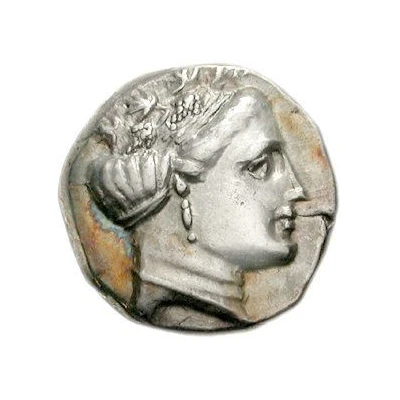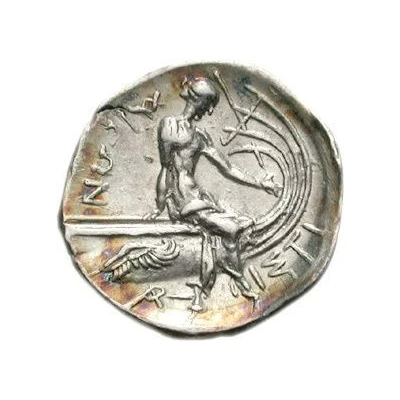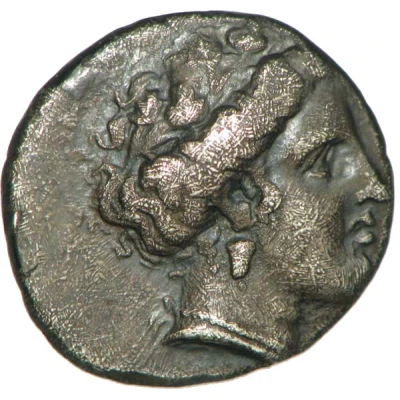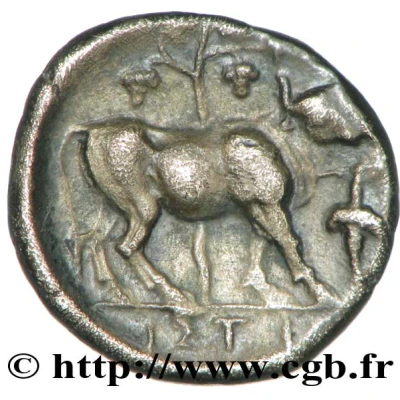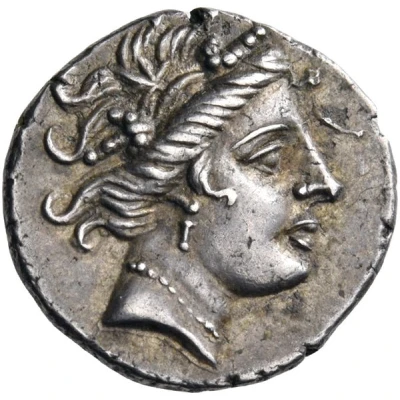
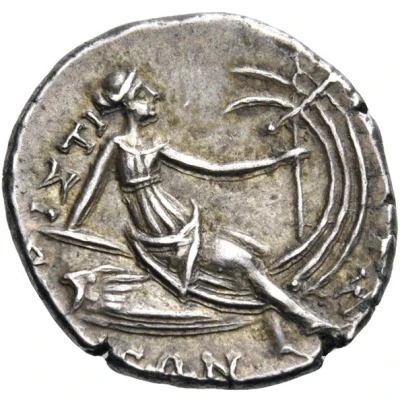

© Nomos AG
Tetrobol 300 BC - 100 BC
| Silver | 2.22 g | 15.5 mm |
| Issuer | Histaia (Euboia) |
|---|---|
| Type | Standard circulation coin |
| Years | 300 BC - 100 BC |
| Value | Tetrobol (⅔) |
| Currency | Drachm |
| Composition | Silver |
| Weight | 2.22 g |
| Diameter | 15.5 mm |
| Shape | Round (irregular) |
| Technique | Hammered |
| Demonetized | Yes |
| Updated | 2024-10-10 |
| Numista | N#276531 |
|---|---|
| Rarity index | 91% |
Reverse
Nymph seated right on stern of galley decorated with wing, holding stylis.
Script: Greek
Lettering: IΣTIAIEΩN
Interesting fact
The Tetrobol coin from Histaia (Euboia) was used as a form of currency in ancient Greece during the 3rd century BC. It was made of silver and weighed approximately 2.22 grams. Despite its small size, the coin was an important medium of exchange during that time, and it features an image of the goddess Athena on one side and an owl on the other. The owl was a symbol of wisdom and intelligence, which reflects the importance of those values in ancient Greek culture.
